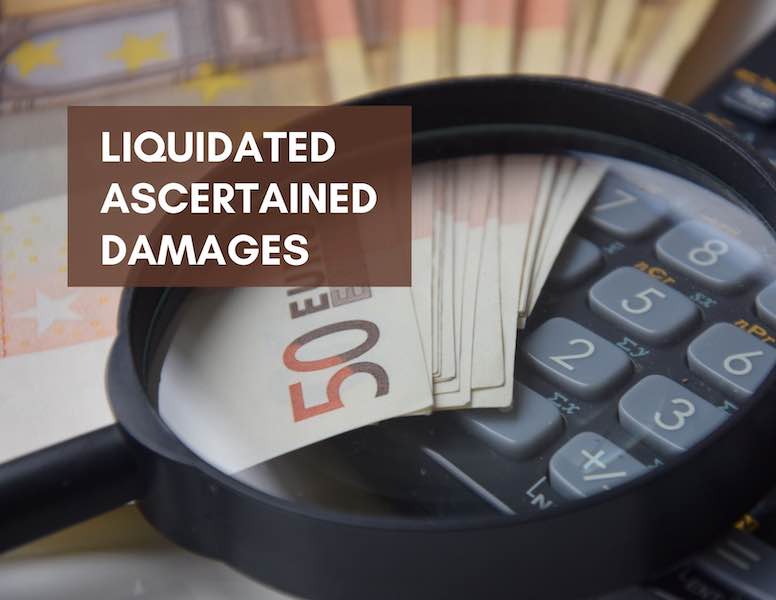Liquidated Ascertained Damages
by Yeoh Ean Cheah ~ 7 September 2021

Yeoh Ean Cheah (Associate)
Are you sufficiently protected under a LAD clause, come rain or shine?
Have you ever found yourself in a situation where your contract has been breached but you are not sure of your next steps in recovering compensation from the breaching party?
The first thing you should do is to look at your contract and examine the contract thoroughly to see if there is a Liquidated Ascertained Damages (“LAD”) clause in the contract. If yes, your journey to recover compensation may just get easier as per the landmark Federal Court decision in Cubic Electronics Sdn Bhd (in liquidation) v Mars Telecommunications Sdn Bhd [2019] 6 MLJ 15, subject to a few caveats.
What is a Liquidated Ascertained Damages clause?
A Liquidated Ascertained Damages (LAD) clause is a clause which stipulates a sum (which has been ascertained and agreed upon by the contracting parties) as the amount to be paid to the innocent party in the event of a breach of contract. Section 75 of the Contracts Act 1950 covers compensation by way of a LAD clause or penalty clause, in that:
“When a contract has been broken, if a sum is named in the contract as the amount to be paid in case of such breach, or if the contract contains any other stipulation by way of penalty, the party complaining of the breach is entitled, whether or not actual damage or loss is proved to have been caused thereby, to receive from the party who has broken the contract reasonable compensation not exceeding the amount so named or, as the case may be, the penalty stipulated for.”
So, I have a LAD clause but how is it enforced?
Unlike ordinary damages which must be proved in court in order to be claimed, the Federal Court in Cubic Electronics Sdn Bhd (in liquidation) v Mars Telecommunications Sdn Bhd [2019] 6 MLJ 15 held that actual loss or damage does not need to be proved in cases where there is a LAD clause in the contract.
“[65] With respect and for reasons we shall set out below, we are of the view that there is no necessity for proof of actual loss or damage in every case where the innocent party seeks to enforce a damages clause...”
This shift in the way that compensation by way of a LAD clause is claimed brings about two clear changes:
a. The innocent party no longer has to prove actual losses for the LAD clause in the contract to take effect.
b. The innocent party is only required to prove that contract has been breached, and that the contract contains a LAD clause. Once these two requirements have been satisfied, the party that breached the contract then bears the burden to prove that the sum stipulated in the LAD clause is unreasonable.
The shift in the burden of proof is illustrated as below:
“[74] …(g) the initial onus lies on the party seeking to enforce a damages clause under s 75 of the Act to adduce evidence that firstly, there was a breach of contract and that secondly, the contract contains a clause specifying a sum to be paid upon breach. Once these two elements have been established, the innocent party is entitled to receive a sum not exceeding the amount stipulated in the contract irrespective of whether actual damage or loss is proven subject always to the defaulting party proving the unreasonableness of the damages clause including the sum stated therein, if any..”
How do I prevent the likelihood of a LAD clause being deemed unreasonable?
Here are some practical tips to keep in mind when incorporating a LAD clause into your contract:
a. Ensure that the stipulated sum under a LAD clause is a genuine pre-estimate of the loss that might be sustained if a breach does occur.
b. Ensure that the sum stipulated in the LAD clause is proportionate to protect your legitimate interest in the performance of the contract.
Whilst the requirement to prove actual loss has now been dispensed with, it is worthwhile to note that evidence of such loss is still a “useful starting point” in the eyes of the court in determining the reasonableness of the LAD clause. See Cubic Electronics Sdn Bhd (in liquidation) v Mars Telecommunications Sdn Bhd [2019] 6 MLJ 15 at p. 45.
“[74] … (f) s 75 of the Act allows reasonable compensation to be awarded by the court irrespective of whether actual loss or damage is proven. Thus, proof of actual loss is not the sole conclusive determinant of reasonable compensation although evidence of that may be a useful starting point..”
As such, it would be a good practice to keep a documentary record of damages or costs incurred as a result of the breach.
Conclusion
The change in the court’s approach when handling a claim to enforce a LAD clause without having to prove actual loss is celebrated. This landmark Federal Court decision has successfully guided the lower courts, as seen in the High Court cases of Leong Keng Chiang v Prema Bonanza Sdn Bhd [2021] MLJU 714 and Lam Su See v Prema Bonanza Sdn Bhd [2021] MLJU 713.
Last, if you are intending to rely on a LAD clause in a contract for the purpose of risk management – whether it is to strengthen your claim for compensation in the event of a breach of contract or to set a pre-determined sum which the other party is entitled to for breach – it is important that the LAD clause is drafted with accuracy and care in order for it to be given legal effect. Also, whilst it is no longer necessary to prove actual losses or damages, it is prudent if you are able to produce evidence of the same so that the judge can refer to it for starters.